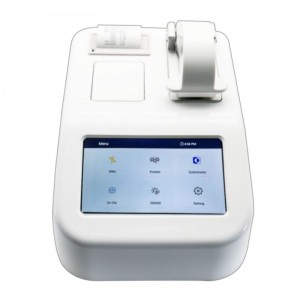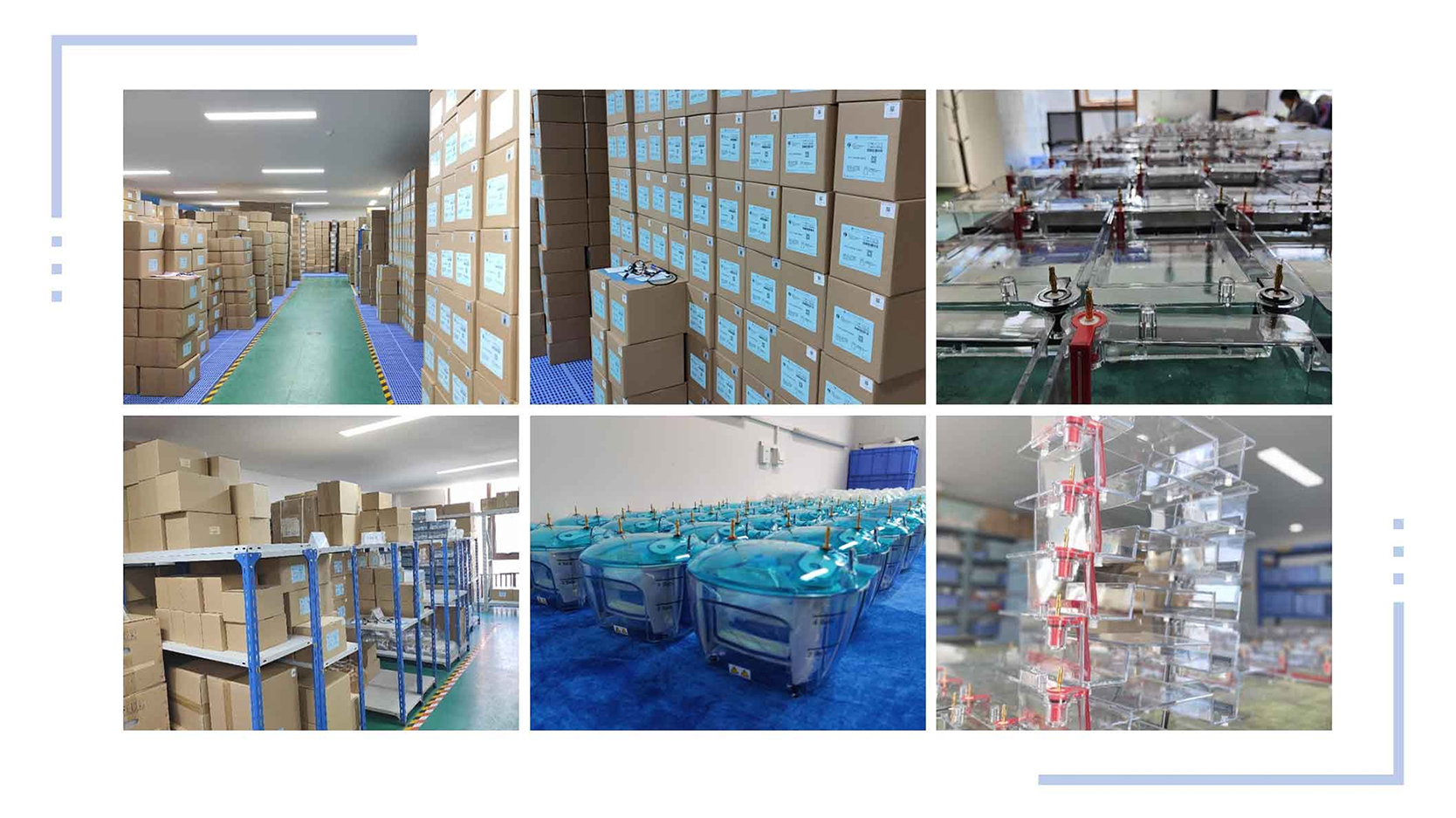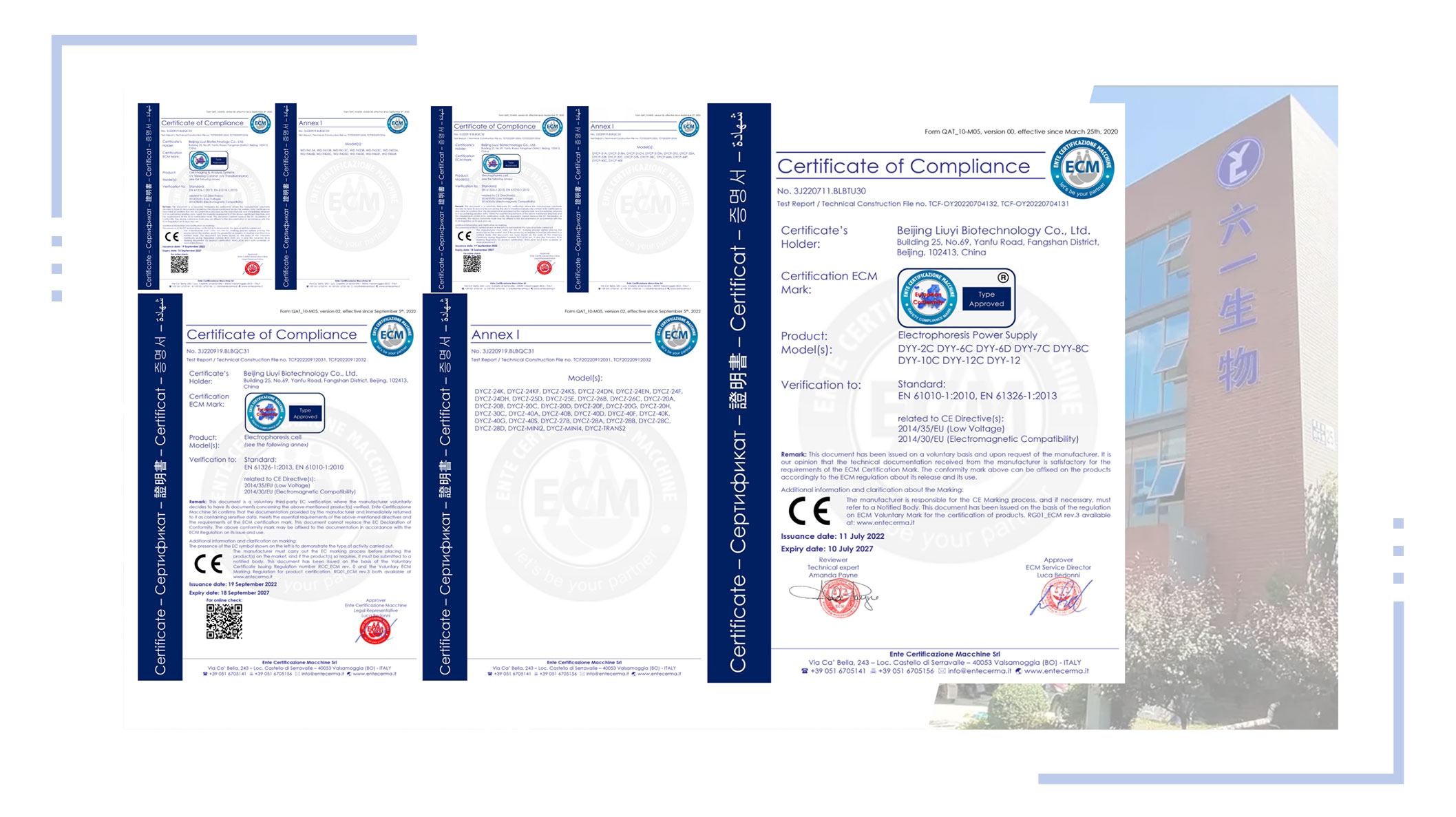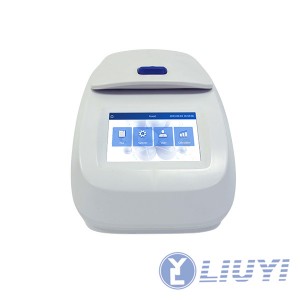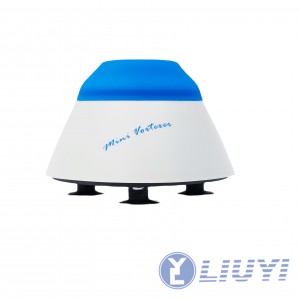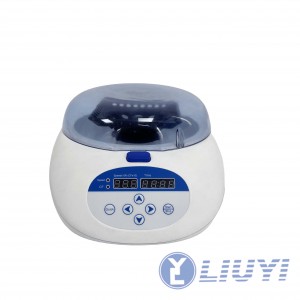Ultra-Micro Spectrophotometer WD-2112A
Specifications
| Model | WD-2112A |
| Wavelength Range | 190-850nm |
| Light Range | 0.02mm, 0.05mm (High concentration measurement)
0.2mm, 1.0mm (General concentration measurement) |
| Light Source | Xenon flashing light |
| Absorbance Accuracy | 0.002Abs(0.2mm Light Range) |
| Absorbance Range
(Equivalent to 10mm) |
0.02- 300A |
| OD600 | Absorbance range: 0~6.000 Abs
Absorbance stability: [0,3)≤0.5%,[3,4)≤2% Repeatability of absorbance: 0,3)≤0.5%, [3,4)≤2% Absorbance Accuracy: [0,2)≤0.005A,[2,3)≤1%,[3,4)≤2% |
| Operation Interface | 7 inch touch screen; 1024×600HD display |
| Sample Volume | 0.5-2μL |
| Nucleic Acid/Protein Testing Range | 0-27500ng/μl(dsDNA); 0.06-820mg/ml BSA |
| Detectors | HAMAMATSU UV-enhanced; CMOS Line Array Sensors |
| Absorbance Accuracy | ±1%(7.332Abs at 260nm) |
| Testing Time | <5S |
| Power Consumption | 25W |
| Power Consumption at standby | 5W |
| Power Adapter | DC 24V |
| Dimensions((W×D×H)) | 200×260×65(mm) |
| Weight | 5kg |
Description
The nucleic acid detection process requires only 0.5 to 2 µL of sample per measurement, which can be directly pipetted onto the sampling platform without the need for additional accessories such as cuvettes or capillaries. After the measurement, the sample can be easily wiped off or recovered using a pipette. All steps are simple and rapid, allowing for seamless operation. This system finds applications in various fields including clinical disease diagnosis, blood transfusion safety, forensic identification, environmental microbiological testing, food safety monitoring, molecular biology research, and more.
Application
Apply to quickly and accurately detect nucleic acid, protein and cell solutions, and is also equipped with a cuvette mode for the detection of bacteria and other culture fluid concentrations.
Feature
• Light Source Flickering: The low-intensity stimulation allows for faster detection of the sample, and it is less prone to degradation;
• 4-Path Detection Technology: offering improved stability, repeatability, better linearity, and a broader measurement range;
• Sample Concentration: Samples do not require dilution;
• Easy-to-use data-to-printer options with a built-in printer, allowing you to directly print reports;
• Developed with an independent Android operating system, featuring a 7-inch capacitive touchscreen.
FAQ
Q: What is an ultra-micro spectrophotometer?
A: An ultra-micro spectrophotometer is a specialized instrument used for highly sensitive and precise measurements of light absorption or transmission by samples, particularly those with small volumes.
Q: What are the key features of an ultra-micro spectrophotometer?
A: Ultra-micro spectrophotometers typically offer features such as high sensitivity, wide spectral range, compatibility with small sample volumes (in the microliter or nanoliter range), user-friendly interfaces, and versatile applications across various fields.
Q: What are the typical applications of ultra-micro spectrophotometers?
A: These instruments are commonly used in biochemistry, molecular biology, pharmaceuticals, nanotechnology, environmental science, and other research areas. They are utilized for quantifying nucleic acids, proteins, enzymes, nanoparticles, and other biomolecules.
Q: How do ultra-micro spectrophotometers differ from conventional spectrophotometers?
A: Ultra-micro spectrophotometers are designed to handle smaller sample volumes and offer higher sensitivity compared to conventional spectrophotometers. They are optimized for applications requiring precise measurements with minimal sample amounts.
Q: Do ultra-micro spectrophotometers require a computer for operation?
A: No, our products don’t need a computer for operation.
Q: What are the advantages of using ultra-micro spectrophotometers?
A: Ultra-micro spectrophotometers offer advantages such as increased sensitivity, reduced sample consumption, rapid measurements, and precise results, making them ideal for applications where sample volume is limited or where high sensitivity is required.
Q: Can ultra-micro spectrophotometers be used in clinical settings?
A: Yes, ultra-micro spectrophotometers find applications in clinical settings for various purposes, including disease diagnosis, monitoring of biomarkers, and research in molecular diagnostics.
Q: How do I clean and maintain an ultra-micro spectrophotometer?
A: It is important to follow the manufacturer's guidelines for cleaning and maintenance. Typically, cleaning involves wiping the instrument surfaces with a lint-free cloth and using appropriate cleaning solutions for optical components. Regular calibration and servicing may also be necessary to ensure accurate performance.
Q: Where can I find technical support or further information about ultra-micro spectrophotometers?
A: Technical support and additional information can usually be obtained from the manufacturer's website, user manuals, customer support services, or through contacting authorized distributors.


